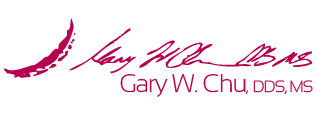Oral Hygiene
Oral Hygiene
It’s more important than ever to brush and floss regularly when you have braces, so the teeth and gums are healthy after orthodontic treatment. Patients who do not keep their teeth clean may require more frequent visits to the dentist for a professional cleaning. Adults who have a history of gum disease should also see a periodontist during orthodontic treatment.
Orthodontic Brushing and Flossing
- Use a soft-bristle brush with a toothpaste containing fluoride.
- Brush after every meal and every snack.
- If you absolutely cannot brush right away, rinse well with water.
- Most importantly, brush and floss everyday until your teeth and braces are spotlessly clean. You should be spending at least five minutes in this process.
- Rinse with a fluoride mouthwash after brushing.
- Remember – we want to make it easy for you to follow these guidelines.
- We have school brushing passes available as well as additional supplies – just ask!!
TIP 1:
Thoroughly brush all surfaces of every tooth. Place your toothbrush at a 45-degree angle and be sure to brush the area between the braces and your gums.
TIP 2:
Brush your braces in three directions: upward, downward, and over the front. Be sure the bristles are getting underneath the wires when doing this. After brushing, rinse well. Inspect carefully by looking in a mirror. Brush any areas you may have missed.
TIP 3:
Floss carefully between each tooth once a day using floss. With braces, a floss threader may be helpful. Floss threaders are used to guide the floss under the wires when braces are in place. To use, thread the floss through the hole on the threader and gently guide the threader under your arch wire and floss between the teeth. If there is a wire behind your lower teeth, be sure threader passes under it.
TIP 4:
Fluoride rinse helps protect your teeth from decay. It should be used once a day at bedtime. Brush with toothpaste and floss as normal. When finished, rinse with your fluoride mouthwash (Phosflur®) for one minute. Spit out the extra fluoride but do not rinse. Do not eat or drink anything after using the fluoride.
TIP 5:
Wax is used if your braces or wires are rubbing the inside of your lips or cheeks. Use a small ball of wax and press it onto the bracket, wire or anything that is bothering you. It is used to make you comfortable until your cheeks can adjust to the braces, or until you can schedule for a repair. You should remove the wax before brushing, and if it is accidentally swallowed, it is not harmful.









